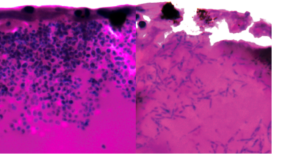Scientists find evolutionary explanation for “irrational” Dread Risk behaviour

Photo by Ronit Singh on Unsplash
The evolution of the so-called Dread Risk response has been explained by new scientific research.
People often respond to low-probability, high-consequence events like terror attacks or nuclear accidents with a Dread Risk response. This intense fear of the perceived sources of dread leads to extreme avoidance behaviour, which often means that people expose themselves to higher risk of dying in more common incidents like traffic accidents.
Scientists at the Universities of Exeter and Bristol have used a mathematical model to show how such apparently irrational overreaction biases are actually favoured by evolution. In their model, individuals that exhibit bias against activities that, however unlikely, could wipe out a significant proportion of their extended family group tend to leave more copies of their genes in the long run than those that respond to these risks more proportionately.
This evolved genetic strategy, the researchers say, explains why individuals will choose alternative actions that carry greater risk to themselves, such as choosing to drive rather than fly in the wake of an air disaster.
The research, published in Scientific Reports, challenges conventional wisdom that individuals just need better information about the respective risks to make safer decisions.
“The world has always been a risky place for humans, full of uncertain hazards,” says Dr Sasha Dall, Associate Professor of Theoretical Biology at the University of Exeter, Cornwall. “And though modern life is generally much safer, we have retained a deep sense of dread for events that might cause a mass loss of life, such as a terrorist attack or natural disaster – and we bias our behaviour as a result.
“Several theories have been put forward as to why that might be, but our research is the first to show that it can be explained by the mathematics of evolutionary theory.”

The paper considers the impact of the 9/11 terrorist attack in America, which, for the following 18-month period, resulted in a decrease in airline passenger numbers and an additional 3,000 excess deaths due to traffic accidents. This prompted calls for better guidance on risk and passenger safety to help people make more informed choices.
But the authors say that this apparently “maladaptive” behaviour can be explained through the principles of genetic evolution and by understanding the nature of the different types of risk we encounter.
“Our findings suggest that it doesn’t matter how well-informed people are, they are likely to have an evolved tendency to bias their behaviour against exposure to rare but mass mortality events, which we term environmental or aggregate risks,” says lead author Emeritus Professor John McNamara from the University of Bristol’s School of Mathematics. “This bias is felt in the form of dread, a defence mechanism to protect our familial structures, and indeed, our genetic dynasty. The stronger the bias, the greater the dread.”
The researchers say that even when the alternative course of action, such as driving instead of taking the plane, is shown to present a greater risk to individual safety, it can be safer from the perspective of protecting the overall genetic lineage. These idiosyncratic or demographic risks, as they are termed, impact individuals independently rather than larger cohorts of the population at once.
Scales of risk and adaptive ‘dread’: an evolutionary theory of risk inflation is published in Scientific Reports. Dr Dall was supported by a Royal Society Leverhulme Trust Senior Fellowship for part of this work.



